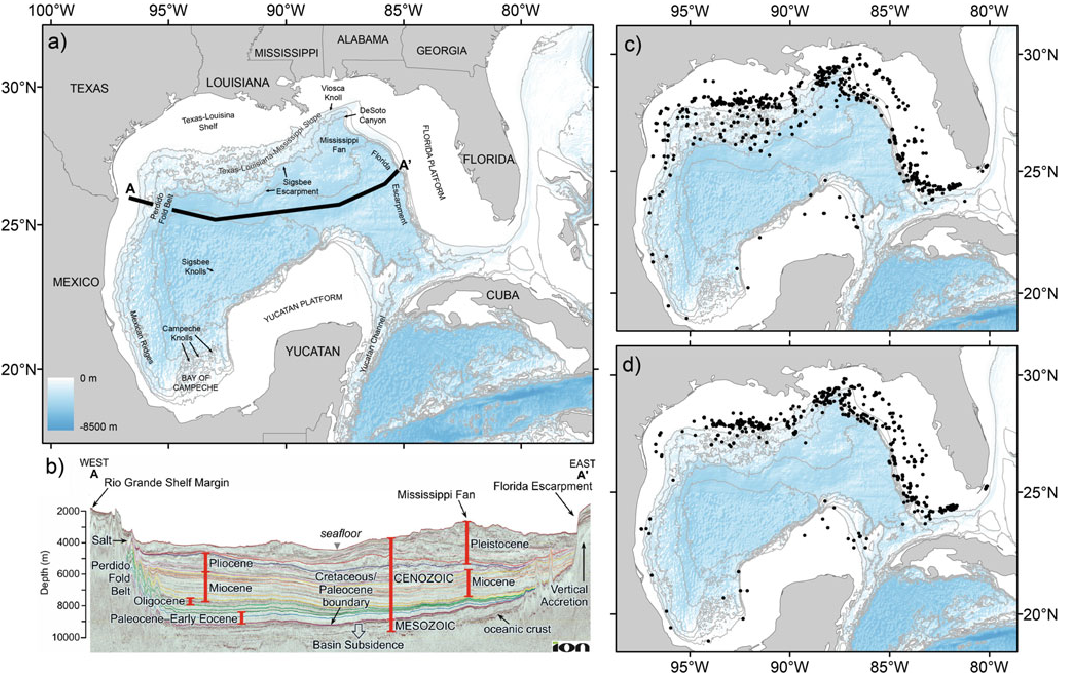Cold-Water Corals of the World: Gulf of Mexico
Brooke S, Demopoulos A, Roberts H, Lunden J, Sutton T, Davies A
The Gulf of Mexico is a semi-enclosed sea that borders the USA and Mexico and covers approximately 1.5 million square kilometers. The northern Gulf is topographically complex and is a rich source of oil and gas deposits, which has led to a great deal of research on benthic ecosystems from the coastal zone to the deep sea. While not fully explored, the distribution of cold seeps and deep corals in the northern Gulf is reasonably well described. The eastern Gulf has a moratorium on energy industry development and consequently less exploration and research has been conducted in this region; however, recent explorations have revealed deep scleractinian reefs on the west Florida slope and extensive octocoral gardens on the deep escarpment. The Gulf is a productive sea with lucrative fisheries in addition to oil and gas. Exploitation of natural resources and potential climate change impacts threaten vulnerable ecosystems in the Gulf, including those in the deep sea. This chapter describes the oceanography and geology of the Gulf of Mexico, presents the current state of the knowledge of cold-water coral distribution, physiology and ecology, and provides an assessment of the threats to these vulnerable ecosystems.
Request PDF
| To request a PDF copy of this paper, please enter your email address below: Your email address is not stored, it is only used to send an email with an attached PDF to you. |
Full Citation
Brooke S, Demopoulos A, Roberts H, Lunden J, Sutton T, Davies A (2023) Cold-Water Corals of the World: Gulf of Mexico. In: Cordes E, Mienis F (eds) Cold-Water Coral Reefs of the World. Springer International Publishing, Cham, pp 51-90

